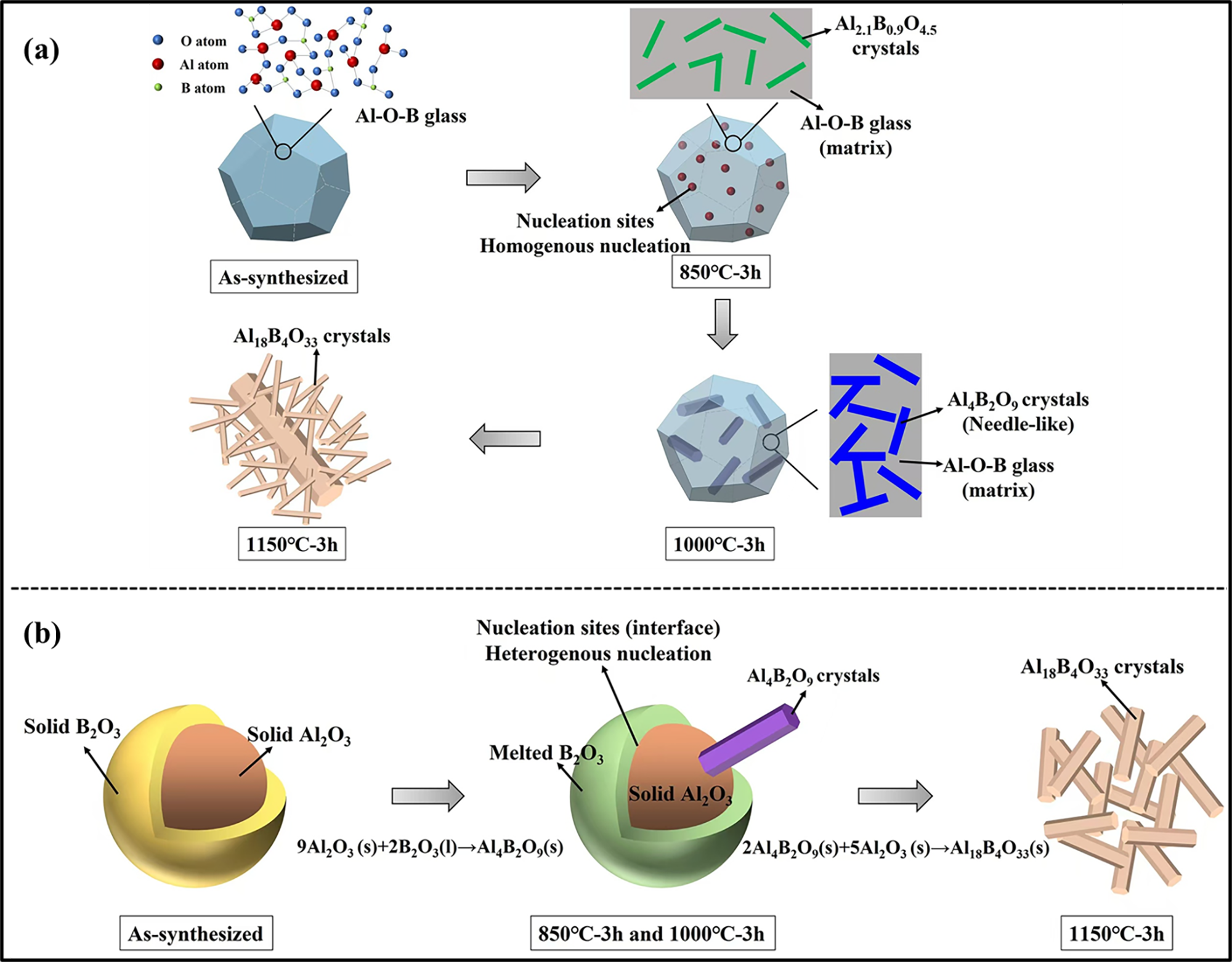DOI number:10.1111/jace.70294
Journal:Journal of the American Ceramic Society
Abstract:luminum borate whiskers (ABOws) have been widely utilized as a secondaryphase for fabricating ceramic composites. The morphology and thermal stabil-ity of ABOws play a critical role in achieving their optimal performance. Inthis study, two precursor powders were synthesized via chemical precipitationand mechanical mixing, followed by the induction of a solid–liquid reactionat elevated temperatures to form ABOws. For ABOws prepared from chemi-cally precipitated powder, a metastable intermediate Al2.1 B0.9 O 4.5 phase was firstformed at 850◦C, which subsequently transformed to Al4 B2 O 9 at 1000◦C andfurther evolved into needle-like Al 18 B4 O 33 with high aspect ratio at 1150◦C. Incontrast, for ABOws prepared via mechanically mixed powder, the formation ofAl4 B2 O 9 began at 850◦C, and it fully converted to rod-like Al18 B4 O 33 at 1150◦C.The morphology differences of those two types of ABOws were ascribed totheir different nucleation routines. Homogenous and heterogeneous nucleationoccurred in the chemically precipitated amorphous and mechanically mixedpowders, respectively, leading to the formation of ABOws with different mor-phologies. The two types of ABOws demonstrated phase composition stabilityup to 1400◦C. However, pronounced morphological changes were observed at1200◦C. These findings offer valuable insights into the microstructure formationprocess and thermal stability of ABOws with tunable morphologies.
Co-author:Mingxi Deng, Zihua Lei
First Author:Le Fu*
Correspondence Author:Yang Liu
Page Number:e70294
Translation or Not:no
Links to published journals:https://ceramics.onlinelibrary.wiley.com/doi/10.1111/jace.70294


